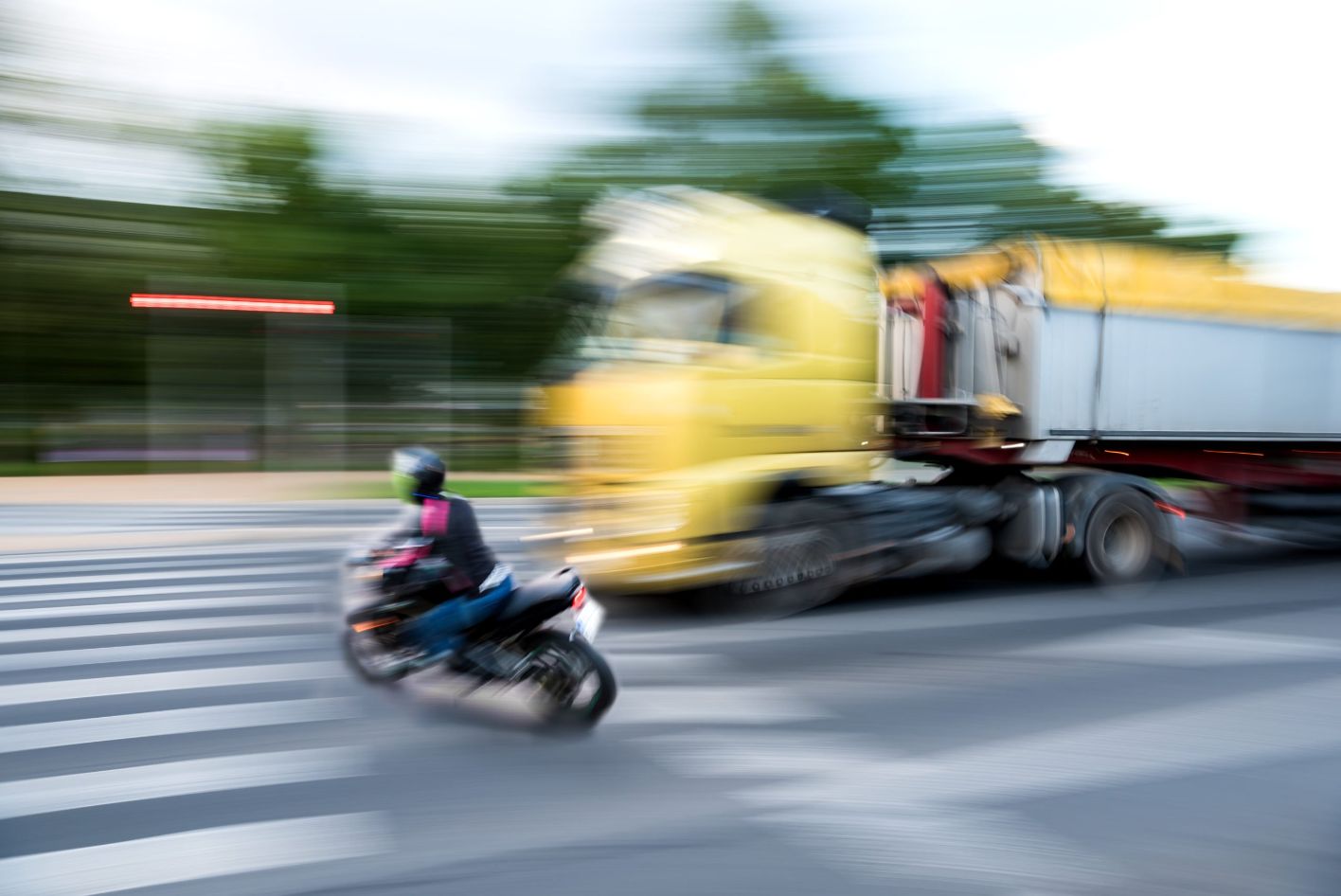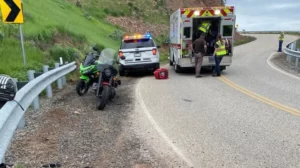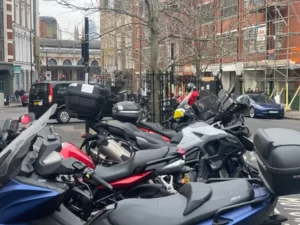The key to your safety while riding a motorcycle is to be aware of the causes of motorcycle accidents. Tragically, fatal motorcycle accidents can happen quickly.
The fact that motorcycle riders are more susceptible to an accident, a serious injury, or a fatal road crash simply because they have less protection than a person riding in a car or truck, as well as the motorcycle’s smaller size and visibility, all contribute to motorcycle accidents.
In this article, we’ll explore the reasons why many motorcycle crashes happen. Please keep reading.
The Deadly Left-turn
According to the National Highway Traffic Safety Association, left-turn accidents cause 36% of fatal motorcycle accidents. The most frequent motorcycle accidents occur when a car fails to see a rider or incorrectly determines their speed before turning in front of them.
How to Avoid:
You need to be able to predict the next move of the other drivers in order to avoid this accident, as is the case in most situations. This is the best way to stay safe, apart from the usual defensive driving methods and wearing your protective gear. Look for indicators that someone may be about to turn in front of you, for example:
- At a crossroads, a car is waiting to make a turn.
- While someone is waiting to proceed, there is a pause in the flow of traffic in front of you.
- They do a last-second “look both ways” head-maneuver.
Slow down if you spot anything resembling this, which you should be on the lookout for. Move over to the outside lane away from the car and prepare to brake or take evasive action. If there is a reasonable gap in front of you, another driver will be able to pull out even if you are unable to see a car waiting to turn.
It has been established beyond a doubt that motorists do not consciously scan the road for motorcycles. Because that is what they are driving, they have conditioned their minds to only looking for large vehicles. Combine this with the challenge of seeing motorcycles. and you have a dangerous situation.
Attempt to look the other driver in the eye as well. They are probably aware of your presence and won’t pull away if they see you looking at them and you at them.
Check for obstructions in their path, pay attention to which way their tires are pointed, and observe whether they are actively observing the traffic around them or are glancing down at their phone.
Speeding And Distracted Motorists At Intersections
A driver running a red light at high speed, one who is texting while driving, or one who is following too closely can all hit a motorcyclist as they approach a set of stoplights or an intersection.
Usually, without warning, motorcycle accidents at intersections result in riders being hit head-on or being forced to swerve and crash their bike. Intersections are the scene of nearly half of all motorcycle collisions with other vehicles.
How to Avoid:
Use your motorcycle at a safe speed to prevent this common motorcycle accident. Go the speed limit, but seek out roads with lots of turns and elevation changes to up the thrill factor.
Search online for specialized speed parks that permit riders to go fast on a closed course in safety if you need to satiate that need for speed.
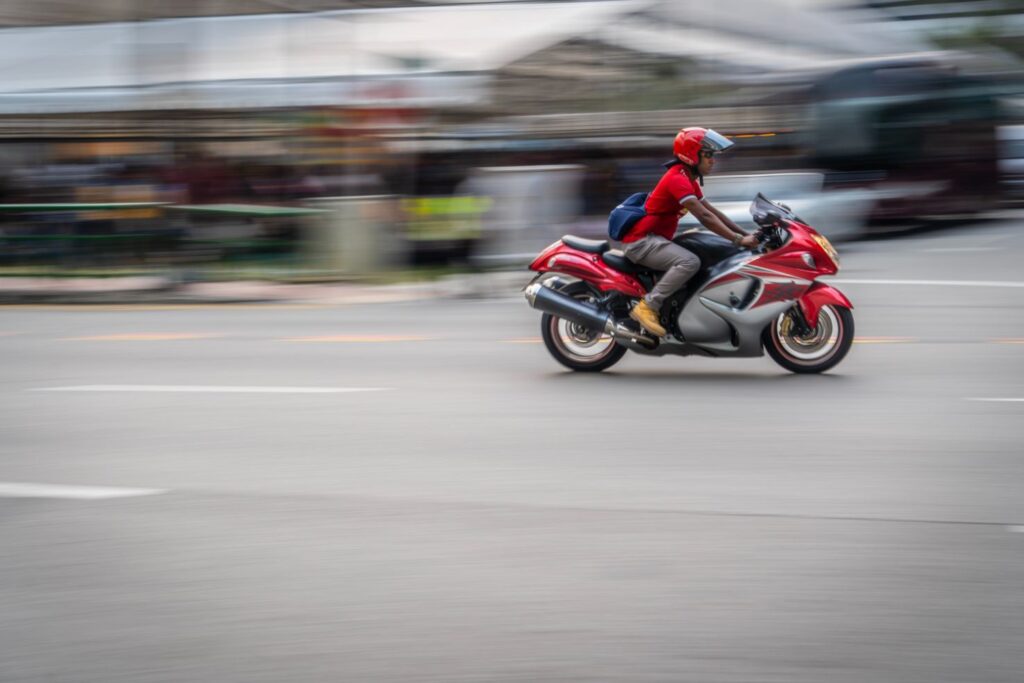
Lane Changes And Lane Splitting
When a car in the opposite lane suddenly swerves into the space you are occupying, it can be quite frightening, even in a car or truck. But for motorcyclists and blind spots, the outcome is tragically fatal all too frequently.
Although drivers should actively search for cars, they aren’t always programmed to look out for motorcycles.
How to Avoid:
Have you ever seen the sticker on a semi-truck that says, “If you can’t see my mirrors, I can’t see you”? That’s how blind spots operate, I suppose. You should be able to see the driver’s face in the mirrors of the car, which indicates that they can probably see you.
In order to escape a blind spot, you should either accelerate or decelerate. Obviously, you cannot always notice or be sure if you’re in a blind spot or if the other driver sees you, so look for signs that a car is changing lanes:
- Their turn signals come on
- Their wheels begin to turn
- The driver begins to check their mirrors
- The driver swivels their head (an indication they’re checking their blind spots)
Be proactive, vigilant, and a defensive driver as you would with any of these suggestions.
Head-on Collision Motorcycle Accidents
56% of motorcycle accident fatalities are caused by collisions with other vehicles. 78% of the time, these accidents happen when a car strikes a motorcycle head-on. Unsurprisingly, head-on collisions between a motorcycle and a car are often fatal for the motorcyclist.
The rider of a motorcycle will either be crushed or catapulted through the air and probably onto some hard surface if it suddenly stops moving at a certain speed. The majority of fatal motorcycle crashes involve this common type of crash.
Both the motorcycle and the car are typically moving at fairly high speeds when a car strikes a motorcycle head-on. Unfortunately, this dramatically increases the motorcyclist’s chances of dying or, at the very least, suffering serious injuries.
How to Avoid:
The National Safety Council (NSC) recommends the “Four Rs“ when trying to avoid a head-on collision:
- Read the road ahead
- Drive to the right
- Reduce your speed
- Ride off the road
The proactive and defensive strategies we have been discussing involve reading the road ahead. Always be in the act of scanning the road in front of you while observing the hazards around you that can cause a motorcycle accident.
Motorcycle Accidents Caused By Intoxication
In motorcycle crashes involving just the rider, this was 43%. Motorcycle accidents frequently involve alcohol. This is most likely due to the social nature of bike riding which often involves going to restaurants or local hangouts to socialize.
The rider of a motorcycle isn’t given much protection. As such, crashes involving alcohol are much more likely to result in death or serious injury, usually for the person on the motorcycle.
How to Avoid:
When you go from bar to bar or hang out to hang out, keep your alcohol consumption to one beer or drink per hour and stop at three drinks. If you decide that this is not your ideal night, ride with everyone to the destination.
Then, make arrangements to leave your bike there and find another way to return home. Uber and Lyft rideshare apps are awesome ways to get home on the cheap.
Corner-turning Motorcycle Accidents
For those driving motorcycles, corners can be risky. Despite the fact that motorcycles typically have a lot of control by nature, they can be challenging to compensate for or correct, especially when turning. When taking a corner you may come across a patch of sand, gravel, leaves, water, etc.
It is simple to lose control of your vehicle once your front tire contacts this substance and loses traction. Another similar way to wipe out when taking a turn is to misjudge how tight it is, causing you to take the turn too fast.
This occurs frequently on winding roads, particularly ones with elevation changes because it can be challenging to anticipate what will come next.
In the event that a motorcyclist crashes due to taking a corner too quickly, other vehicles and potential road hazards could injure them even more.
For instance, if a motorcyclist crashes because they turn too sharply into an intersection, the numerous cars that are crossing the intersection may not be able to stop in time to avoid them, which could result in more serious injuries or even fatalities.
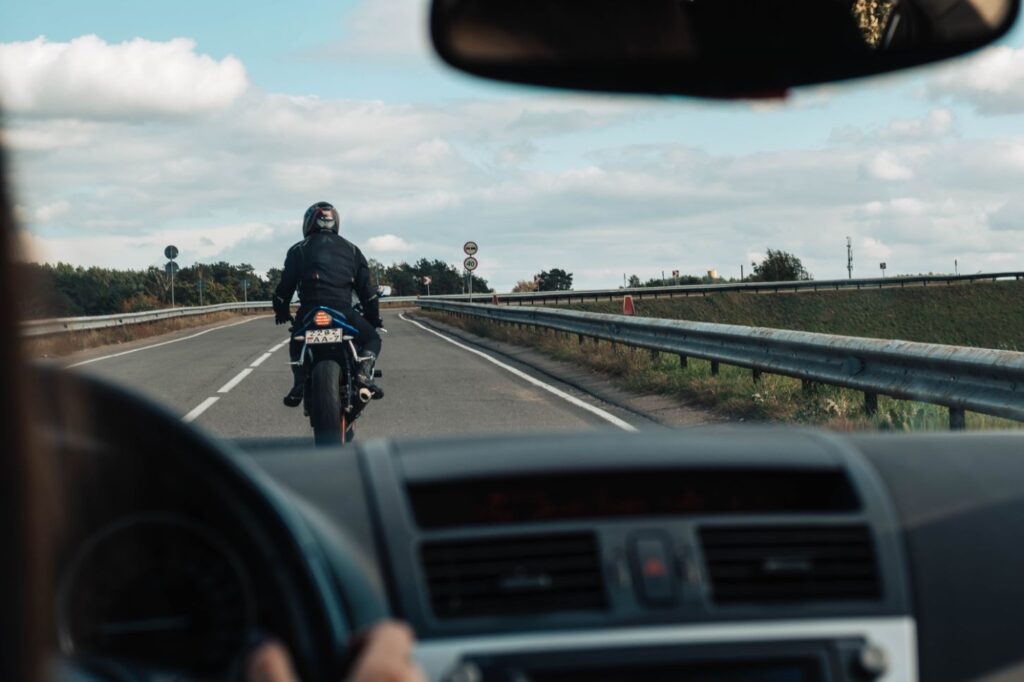
How to Avoid:
Riding at the proper speed is the best way to prevent this frequent cause of motorcycle collisions. You want to travel at a speed where you will have time to react when you see a tight corner or a hazard coming.
“Slow In, Fast Out” is an effective rule of thumb. To widen your field of vision, approach corners slowly and widely. You can accelerate and round the corner once you are certain you can handle the turn and there are no dangers.
Observing traffic signs and becoming familiar with the various signs that denote turns or hazards up ahead can be very beneficial. Also, keep in mind that certain parts of the road accumulate debris.
Gravel or other small particles can accumulate anywhere that tires don’t frequently contact, such as shoulders or sliver-shaped areas in a turn, as fatigue pushes the material to that area. Have you ever noticed the triangle-shaped pile of trash at the intersection? This is the exact reason why it occurs, and it can be sneaky.
Some riding websites discuss sophisticated techniques for how to make a turn while moving quickly, but slowing down and being cautious is by far the best approach. Make sure to only ride at a speed that you can see and feel comfortable with.
Other Causes Of Motorcycle Crashes
A Car Hits You From Behind
A motorcycle rider and their passenger risk serious injury or worse if they are thrown into oncoming traffic in even the slightest fender bender at a low speed. Rear-end collisions, which account for 7% of all motorcycle crashes that result in fatalities, are sadly among the most typical types of motorcycle collisions.
Hit During A Group Ride
All of us have witnessed those motorcycle riding groups out on a tour on the weekends. But even friends riding bikes have the potential to cause an accident due to distractions, drug or alcohol impairment, lack of motorcycle knowledge, or reckless driving.
Being Hit By An Open Car Door
This kind of accident involving a driver who opens his door wide without first looking into the street does occur, despite the fact that it may seem more like a TV skit. The accident could have been prevented if the driver hadn’t hit the motorcycle with their door.
How Can A Motorcycle Rider Stay Safe?
Everyone is aware of the extreme dangers associated with riding a motorcycle. There are a few basic tips every motorcyclist needs to know so they can stay safe on their motorcycle.
First off, wearing a helmet can help you avoid serious injuries from motorcycle accidents and can even save your life. According to the IIHS, helmets are roughly 37% effective in preventing motorcycle deaths and 67% effective in preventing brain injuries.
There are many other important parts south of the neck that can benefit from protective gear in addition to simply wearing a helmet. Wearing gloves, boots, suits, and other protective clothing can greatly reduce your risk of suffering a serious motorcycle injury, such as a road rash.
Chances are, you will fall off your bike at some point so it is within your best interest to be prepared.
Spending time and money on a motorcycle safety course is also a wise decision. The Motorcycle Safety Foundation offers classes across the nation, ranging from the fundamental beginner classes needed to obtain a license to more advanced courses that teach riders how to make evasive maneuvers and recognize potential collisions.
One of the best ways to stay safe is to continually exercise your body and mind and educate yourself.
Read More: Are Motorcycles Safe?
Step To Take If You’ve Been Injured In A Motorcycle Accident
Ensure the safety of all parties involved in the crash, including yourself, as soon as possible after a motorcycle accident. If you require immediate medical attention, dial 911. Call 911 even if you’re not sure if it’s necessary.
If 911 isn’t an option, call the police instead. The scene will be visited by a police officer. The policeman will interview everyone involved and write up a police report. In settlement talks, a police report can be very helpful.
You can take action to ensure that you are fully compensated for your damages. You should gather potential evidence for your car accident case, including:
- insurance information for any person and vehicle involved in the accident
- names and phone numbers of all witnesses
- pictures of the accident scene and your injuries
- video footage from traffic and security cameras, and
- a copy of the police report when it’s available.
